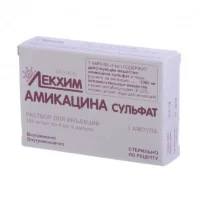Description
Linezolidin Solution for Infusions 2 mg/ml. 300 ml Vial
Ingredients
- Linezolid is the active ingredient in Linezolidin solution for infusions.
Dosage
- The recommended dosage of Linezolidin solution for infusions is determined by the prescribing healthcare provider based on the individual’s condition and response to treatment.
Indications
- Linezolidin solution for infusions is indicated for the treatment of infections caused by susceptible strains of bacteria.
Contraindications
- Do not use Linezolidin solution for infusions if you have a known allergy to linezolid or any other ingredients in the formulation.
Directions
- Linezolidin solution for infusions is administered intravenously as directed by a healthcare professional.
Scientific Evidence
- Linezolid, the active ingredient in Linezolidin solution for infusions, has been extensively studied for its efficacy in treating various bacterial infections.
- Research studies have demonstrated the effectiveness of linezolid in inhibiting bacterial protein synthesis, leading to the suppression of bacterial growth and the resolution of infections.
Additional Information
- Linezolidin solution for infusions is a valuable option in the treatment of serious infections caused by Gram-positive bacteria.
- Clinical trials have shown Linezolid to be effective in cases of complicated skin and soft tissue infections, nosocomial pneumonia, and other severe bacterial infections.
- It is well-tolerated by most patients, with a low incidence of adverse effects.
Pharmacologically, Linezolid works by binding to the bacterial 23S ribosomal RNA of the 50S subunit, preventing the formation of the initiation complex that is essential for bacterial protein synthesis. This mechanism of action distinguishes Linezolid from other antibiotics, making it a valuable asset in the management of multidrug-resistant bacterial infections.
Comparative studies have shown Linezolid to be as effective as vancomycin in the treatment of certain infections, with the added benefit of oral bioavailability, allowing for easier transition from intravenous to oral therapy. This versatility makes Linezolidin solution for infusions a preferred choice in the hospital and outpatient settings for various bacterial infections.





